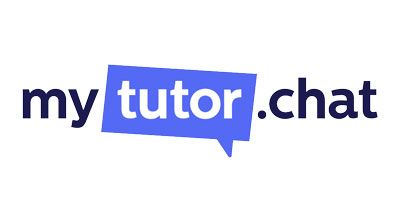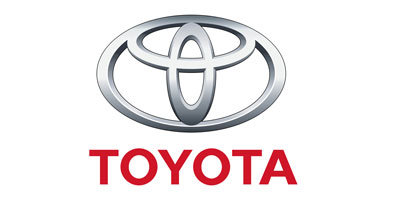“The more that you read, the more things you will know. The more that you learn, the more places you’ll go.” – Dr Seuss
We know that reading is a powerful way to educate children beyond the realms of the compulsory work they need to do to “pass” their subjects. In fact, good readers tend to achieve better across the curriculum, not just in languages. Reading opens multiple worlds for them to explore and enjoy. It exercises their brains and their imaginations and improves concentration. Children enter the thoughts and feelings of the characters in their books, so we find that reading also develops empathy. The vocabulary and language skills used by the writers are picked up unconsciously by readers as they learn to interpret words in context, and not purely through using a dictionary or textbook. Furthermore, reading with your child is a joint exploration in a world that you share, and it is immensely bonding due to the close physical contact of reading side by side and the shared mental activity. In the digital age, print book sales are declining as e-book readership increases. The internet has greatly increased accessibility and affordability of reading material and a new book can be in your collection within seconds, versus a trip to a bookstore or library where the desired book may not even be available.
Turning to the research of Yin Zhang and Sonali Kudva in 2014, we see that, presently, e-book readers are primarily younger, educated and frequent internet users. They enjoy being able to access their reading material at any time on a host of portable devices such as tablets, smart phones and laptops. They also value the search and online dictionary functions available digitally. The cost of digital books is generally cheaper than the printed equivalent as paper, printing and shipping charges are no longer included. In spite of these advantages, traditional books still offer more visual and tactile satisfaction, can be shared more easily and make meaningful gifts.
A big disadvantage of e-books is of course additional screen time tacked on to what is usually already an excessive amount for the average child. Yet today’s children naturally gravitate to digital learning and so may be inclined to read more in digital format than via a traditional book, which may be less familiar. Experts seem to think that for preschoolers, print books are more valuable, as they are associated with the nurturing experience of being read to by an adult and this sets up a positive pattern. In terms of developing early reading skills, both digital and print methods are effective (Deam, 2020).
With digital books, audio and animation can be easily integrated into the learning material and children are given instant, encouraging feedback which a traditional teacher may not be able to deliver at the same pace. Today’s children are generally more excited to read on tablets. For speedy vocabulary development, they are excellent, mainly because the devices interact with children to help them understand words with which they struggle. Children can work independently with devices at their own pace which may help challenged readers to feel less embarrassed and font size can be adjusted for children with visual problems. The availability of digital books might also attract high-tech children into reading when they were not interested before.
With print books, the emphasis is on the actual story being told as opposed to the music, animation and games that can easily distract a child on an e-book. There is the tactile experience of handling a book, turning its pages and breathing in its scent, as well as the social benefits of sharing books between friends. There is also evidence to show that children reading print books remember more details of the stories they read and the order of events that unfold in those stories (Lowry, 2016). A small study showed that more child-centered conversation with a parent or teacher followed, after a print book was read, and more enjoyment and attention from the child. With an e-book, parents and teachers generally ask fewer questions, comment less on the story and are more concerned about functional aspects of the device itself (Jenco, 2019; Strouse & Ganea, 2017).
For e-books to be most effective, games and interactive features should only be active after the narrator has finished reading the page and words should be highlighted as the narrator reads them. Dictionary links or pictures and animation that explain new words are needed to help build children’s vocabulary. Forward and backward buttons also act as virtual page-turners that signal to readers that the story is progressing (Lowry, 2016). In older children, studies show that, as far as comprehension is concerned, the format of the book matters less than the child’s engagement with the setting, characters and theme of the story. However, older children welcome the large selection of titles available and the amenities offered by ebooks (Jones & Brown, 2011).
The verdict seems to be that both digital and print media are valuable, and both should be embraced. However, the greatest learning and development of literacy takes place during the human interaction and conversation that is sparked with adults while children are reading, whether in digital or printed format.
References
Deam, J. (2020). E-Books vs. Print: What Parents Need to Know. Retrieved 24 January 2020, from https://www.scholastic.com/parents/books-and-reading/reading-resources/developing-reading-skills/e-books-vs-print-what-parents-need-to-know.html
Jenco, M. (2020). Study: Parents, toddlers interact more when reading print books vs. e-books. Retrieved 24 January 2020, from https://www.aappublications.org/news/2019/03/25/electronicbooks032519
Jones, T., & Brown, C. (2011). Reading Engagement: A Comparison between E-Books and Traditional Print Books in an Elementary Classroom. International Journal Of Instruction, 4(2).
Lowry, L. (2016). E-Book or Paper Book − What’s Best for Young Children?. Retrieved 24 January 2020, from http://www.hanen.org/Helpful-Info/Articles/E-Book-or-Paper-Book-Whats-Best-for-Young-Child.aspx
Strouse, G., & Ganea, P. (2017). A print book preference: Caregivers report higher child enjoyment and more adult–child interactions when reading print than electronic books. International Journal Of Child-Computer Interaction, 12, 8-5. doi: 10.1016/j.ijcci.2017.02.001
Zhang, Y., & Kudva, S. (2013). Ebooks vs. print books: Readers’ choices and preferences across contexts. Proceedings Of The American Society For Information Science And Technology, 50(1), 1-4. doi: 10.1002/meet.14505001106



















